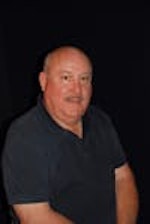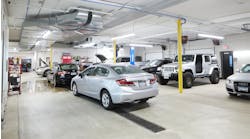Hypocritical hybrid buyers and politically correct diesel engines.
Despite what anti-car, former Vice President Al Gore may think or say, sales of gas/electric hybrid vehicles in California were not motivated by buyers who wanted to drive "greener" cars. More likely, hybrid owners were willing to spend more than $20,000 on vehicles that qualified for a yellow sticker, allowing them to drive alone in the High Occupant Vehicle (HOV) lane and bypass stopped traffic in the other lanes. In other words, hybrid buyers simply wanted to shorten their commute times by avoiding traffic jams.How do we know this? In California, the minute the state ran out of stickers allowing selected hybrid vehicles into HOV lanes with just one person aboard (the driver, we hope), hybrid vehicle sales slowed to a near stop. Sales slowed so quickly, for the first time, manufacturers were forced to offer incentives on hybrid vehicles.
The state of California knew the real motivation behind hybrid sales. Why else would they make it nearly impossible to steal or duplicate the sticker? California limited the number of stickers to 30,000—an arbitrary number the state said would keep the HOV or so-called "carpool lane" moving at a smoother and faster pace than the other lanes.
The HOV lane's original purpose was to promote carpooling. At first, a vehicle carrying at least three occupants was qualified to use the carpool lane. That didn't work, so the state lowered the standard to at least two people per vehicle. The idea was good, but state traffic regulators—then led by the self-proclaimed genius Adrianna Gianturco—missed the fact that the state of California was designed around the freeway system and the dreaded daily commute. The roads were in place for the commutes, but the state had not considered the problem of Too Many People (TMP) and Too Many Cars (TMC).The state also missed the fact most commuter schedules do not coincide with other commuter schedules, which often makes carpooling impractical. Futurist R. Buckminster Fuller was correct when he forecast that someday people would not have to commute to their jobs. With the exception of assembly-line jobs, he predicted most workers could use computers and phone lines and work from home. However, Fuller failed to count on uninitiated managers who continued to demand that people physically report to their offices or cubicles and pound away at computer keyboards. Someday that will change; either by design or by sheer gridlock on the roads and highways.
It seems the "politically correct" thing to do now is to purchase a gas/electric hybrid vehicle so you can feel good about "doing something" to save fuel and the environment. The politically incorrect truth is that the people's view of mass transit is everybody else riding a train or bus while they're in their vehicle speeding down an uncrowded freeway.
Gas/electric hybrid vehicles are the current rage and now the prices are down somewhat, but the reality is, if you really want to save fuel on your long commute, buy a diesel-powered vehicle. Hybrids are fine for short, in-town trips, but when they are cruising down the highway, hybrids don't offer much in the way of fuel-economy savings and the emissions are not all that clean.
For long, high-speed trips, diesel power is the way to go. Diesels typically get up to 30-percent better fuel economy than a gasoline-powered vehicle and they offer lots of torque. In Europe, where gas prices have always been high because of taxes, more than 50 percent of vehicles sold to consumers are diesel powered.
New diesel power plants feature modern technology and they are quieter, pretty much smokeless, and meet ever-more-stringent emission-control rules and regulations. A common-rail, fuel-injected diesel engine is more expensive to manufacturers than a gasoline-powered engine, but in turn, should last much longer.
In fact, General Motors has announced it will build a modern, sophisticated, 4.5-liter dual overhead cam Duramax diesel for the 2009 model year. Initially, it will be installed in the HUMMER H2, but since it's designed to replace the small block V-8 gasoline engine, it will also fit in most GM trucks. This new engine will reportedly have an advertised 310-horsepower rating and deliver a whopping 520 lb.-ft. of stump pulling torque. To be sold in all 50 states, GM also claims the engine will carry significantly higher EPA fuel-economy ratings and meet 2010 emission regulations.
In addition, many diesel-powered import vehicles are on the way. The tiny diesel engines sold in many vehicles in Europe may be too small and too underpowered for use in the U.S. (aftermarket, are you listening?), but as modern turbocharged and supercharged diesels become available, American drivers will shift to them.
My prediction is there will be more diesel-powered vehicles on the road over the next few years. In addition, there will also be an increased demand for diesel performance equipment in the replacement-parts market. I have full confidence the talented American hot rodders in the automotive aftermarket will develop ways to make diesels more powerful and more efficient.
Perhaps California and other states with HOV lanes should consider issuing HOV stickers to drivers of diesel-powered vehicles as well as hybrid drivers. The most efficient vehicle on the highway will soon be a diesel-powered sedan with four people inside. Even anti-car Al Gore would smile at that. And, once the automotive aftermarket develops products to make these vehicles safer, faster, cleaner, and fun-to-drive, even we auto enthusiasts will smile.Mike Anson




